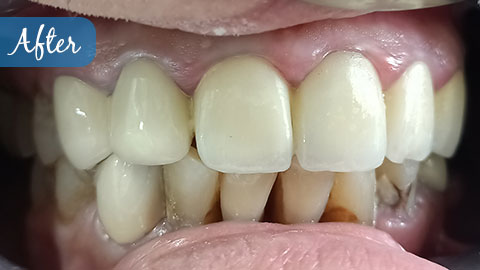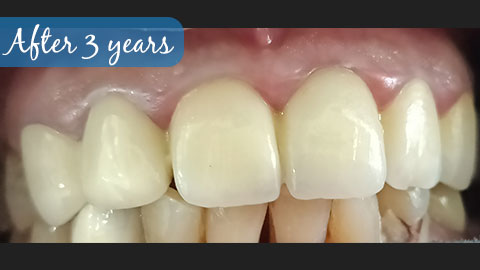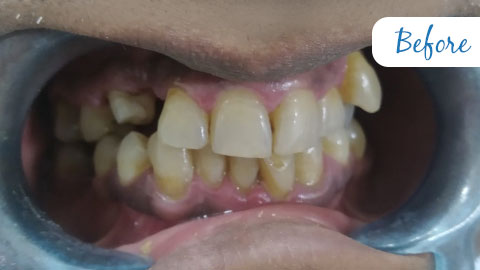Dental Bridge & Crown
Home » Dental Bridge & Crowns
DENTAL BRIDGE
Dental bridge are also known as Fixed Partial Dentures. The bridge is a device that fills the gap/replaces the multiple missing teeth. It take support from adjacent firm and healthy teeth. Dental Bridges is the best solution for the people who are not fit or cannot go for implant procedures due to bone loss or those who are not willing to go for surgical procedures. Fixed bridges offer more stability than conventional removable dentures.
Types of Dental Bridge
- Crowns/Bridges can be made out of gold alloys, non-precious alloys, porcelain or a combination of these materials. Nowadays, Zirconium(tooth colored) metal free crowns and bridges is the material of choice due to:
- higher aesthetics and strength.
- Less chances of chipping and breakage.
- Does not take up stains
- Retains its gloss
- Less cutting of the tooth is required
- Suitable for bruxer patients too
DENTAL CROWNS
Dental Crowns are tooth shaped caps which are placed on the tooth to restore the shape, size, function & appearance of the missing tooth or teeth. When a major portion of the tooth is damaged, missing or affected then a crown is the choice of treatment because it increases the strength of the tooth.
When a single tooth is prepared, it is called a crown and when multiple teeth are to be replaced, it is called a dental bridge.
When is a crown needed?
- To protect or restore tooth structure damaged due to an accident or trauma
- Replace the tooth structure which is damaged with more than 50% for a filling over the implant.
- After a root canal treatment.
- To cover discolored or badly damaged teeth.
How long does it take to fit a crown?
- Replaces the missing teeth, thus restoring the normal function like chewing, biting, etc
- Improved aesthetics over a fracture or a discolored or a root canal treated tooth and prevents its breakage
- With the introduction of new advanced materials which are natural looking & have a high-end cosmetic look yet have enough strength to withstand the daily forces exerted on the tooth, making it possible to have a natural smile
- It is a good solution for replacing congenitally missing teeth
AFTER CARE
- Follow a strict routine of brushing and flossing to avoid undermined caries and gum diseases of the adjacent supporting teeth.
- It is extremely important to maintain oral hygiene by brushing, flossing and rinsing.
- Use of water flosser is recommended too.
- Avoid sticky foods over a crown or bridge as it may dislodge it.
- Do not consume too hot or too cold food as it might cause sensitivity to vital teeth.
- After a root canal treatment, the pulp of the tooth is removed and is strengthened to avoid breakage.
- A crown is a must after a root canal treatment.
- Restoring masticatory function and appearance.
- The loss of a back tooth may cause the mouth to sink and may reduce facial height and your face may look older
- Teeth were designed to complement each other. Unusual stresses are placed on the gums and other oral tissues when the teeth are missing, causing increased risk of gum disease too
BEFORE AFTER GALLERY
PFM Crown & Bridge



PFM Crown & Bridge


PFM Crown & Bridge


